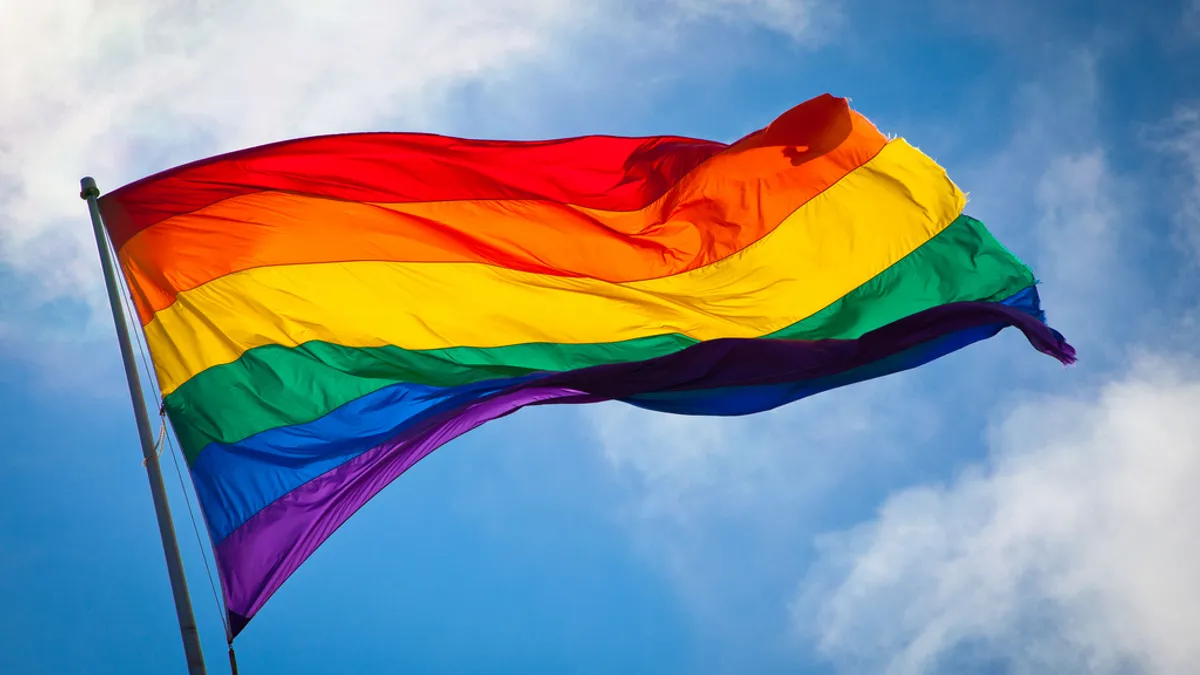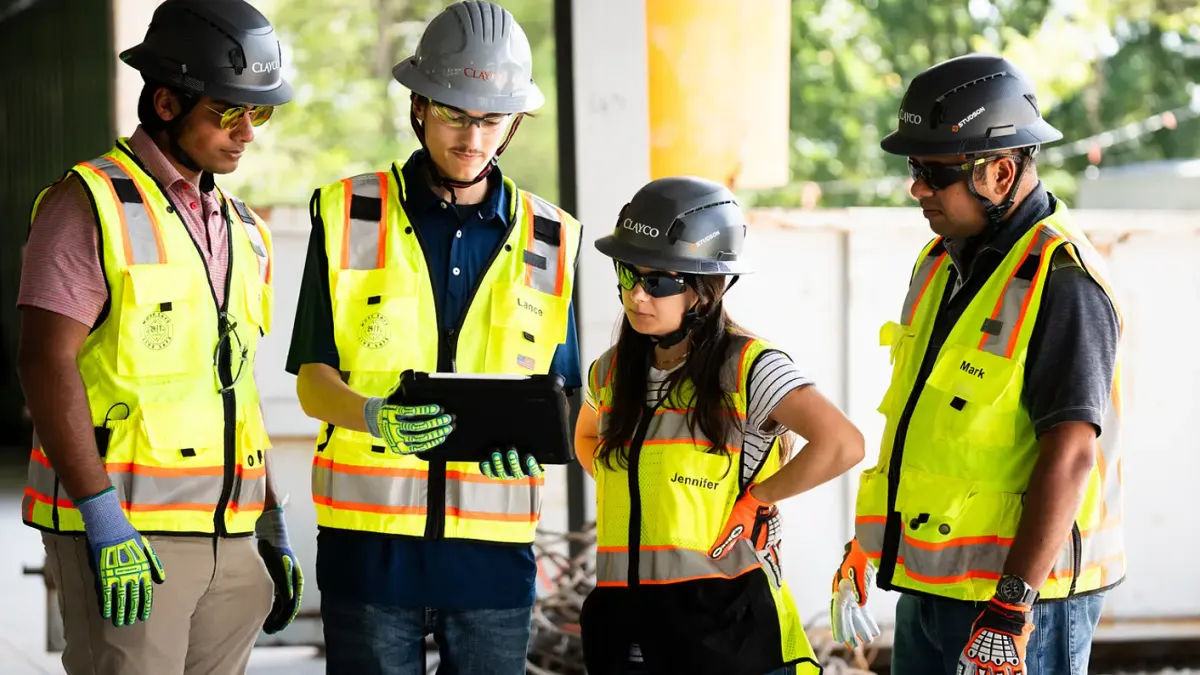Diversity and inclusion initiatives have helped make the workplace better for the LGBTQ community in recent years. Curtis Sparrer, principal at Bospar PR, wrote to HR Dive: "As a gay man who came of age in the 80's there are several things I wish my employers had done to make LGBTQ people feel valued. I remember when I was told to 'get over it' when the word 'gay' was used as a synonym for something that sucked."
The recent shift in views goes beyond using and valuing more inclusive language. In a poll of more than 2,000 workers, Bospar found that 60% have no preference about who they work with, up 5% from last year. It found 68% believe LGBTQ equality is improving, but noted that almost one-third of those surveyed still report being harassed in the workplace because of their sexuality. In order to keep moving the needle, Sparrer and ADP's Rita Mitjans explained their visions for fairer, more inclusive workplaces — and suggested steps HR departments can take to make them a reality.
Inclusion equals growth
Diversity in the workplace is shown to spark innovation and growth, but efforts to achieve that goal need to go beyond what not to say or do to establish an inclusive environment. Building relationships is a necessary precursor to an inclusive workplace, noted Mitjans, chief diversity & corporate social responsibility officer at ADP. When recruiters fear an applicant won't "fit in" it is an opportunity to reflect on their biases and examine the source of the feeling. She said inclusion must be a project that acknowledges the interconnectedness of such biases. Practicing this approach helped earn ADP a perfect score on the Human Rights Campaign Foundation's Corporate Equality Index for 10 years in a row.
"The focus is holistic," she said. "We look at all aspects of diversity: seen and unseen. It could be LGBTQ, religion, veteran or disability status, there are many aspects of diversity and inclusion and they start with a senior leadership commitment to valuing differences and perspectives and taking care, where you can, in every aspect and opportunity to interact with others — welcoming everyone and their beliefs."
The road to equality
Sparrer has a wish list — a set of recommendations that may have fixed problems in the past, and can be helpful for employers working to create an environment that embraces all today. He suggested LGBTQ advisory boards to ensure a constant dialogue with management and noted that when employers support LGBTQ activities and initiatives, they foster positivity. Holding regular education sessions about hurtful workplace conversations can be pivotal to break down language that excludes or marginalizes, and reiterating how diversity makes organizations more successful is also key, Sparrer said.
Mitjans similarly believes that workplace policies are only half the equation, and urged organizations to ask themselves: "What are leaders doing every day to reinforce [LGBTQ positive] beliefs?" She continued, "You have to back up your words with actions."
ADP partners with groups like Out and Equal to reach LGBTQ communities directly and recruit more workers from this cohort. The company is also involved in Cycle for the Cause, a 275-mile bike ride from Boston to New York that raises money for AIDS research. More than 100 ADP associates participate, including high-level management, Mitjans said. To strengthen inclusivity further for existing employees, ADP's "ADP Pride" employee resource group spotlights issues and concerns for the community.
Education may be a critical piece of the puzzle, too, and technology can be a talent pro's friend when it comes to making these approaches engaging, Sparrer said.
"I find that resources are often ignored if they are simply on paper or just a collection of static pixels," Sparrer wrote. "I find videos are the most impactful. The key is getting people to really interact with the content." He suggested employers produce awareness videos featuring employees acting out certain scenarios. HR departments have also found virtual reality to be useful in training employees against sexual harassment and that tech could be considered for inclusion training.
In Bospar's poll, 83% of workers said they believe LGBTQ parity will be achieved in the workplace, and many felt more diversity was the answer, along with education about the issues. Respondents also said they believe inclusion will advance as younger people enter the workforce, and some said if more employees were "out" it would help achieve equality.
Prepping for the future
"From an HR policy perspective," Mitjans said, "we need to be mindful and forward thinking. Today's HRIS system may capture gender based on birth records, but these can change." She noted that there are legal components of inclusion that HR should be aware of too. For example, how might social security benefits for a transgender employee be impacted by a name change?
ADP was ahead of the pack in offering domestic partner benefits, Mitjans said, but when same-sex marriage was legalized, many companies found their domestic partner benefits were no longer valid. "But not everyone is in a position to marry," Mitjans said. "With life insurance and other supplemental benefits, it's important to review language to make sure it's either completely inclusive or broad enough not to be exclusionary."
Health benefits should specifically cover the health needs of transgender employees, too, according to Mitjans. "There are many issues we're just beginning to uncover," she said.
The Human Rights Campaign's Corporate Equality Index may offer further guidance for HR departments wanting to create an inclusive workplace environment. Creating safe spaces to have conversations, recognizing workers' pronoun preferences and looking for tools to create equity for all workers are places to start, experts have said.
Respect across all groups
In some cases, there are groups whose religious beliefs are at odds with the company's position on LGBTQ equality. "For these employees," said Mitjans, "we have to be concerned with their rights and beliefs, as well. Sometimes it's a delicate balance."
ADP's approach is one of respect and recognition — one in which the overarching message is: the work environment must be respectful and professional. "It comes down to the core values of the company," said Mitjans, "inclusion and equality for everyone."


















